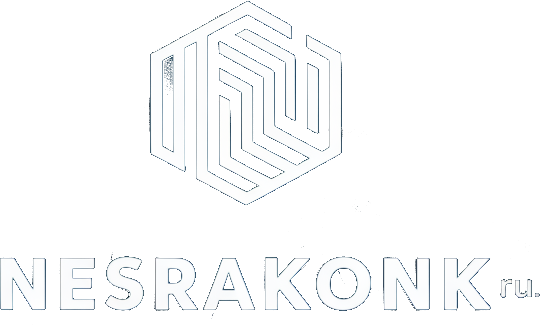Индекс вооружений (TRIN)
Что такое индекс вооружений (TRIN)?
Индекс вооружений, также называемый индексом краткосрочной торговли (TRIN), представляет собой индикатор технического анализа, который сравнивает количество растущих и падающих акций (коэффициент AD) с увеличением и уменьшением объема (объем AD). Он используется для оценки общего настроения рынка. Ричард У. Армс-младший изобрел его в 1967 году, и он измеряет соотношение между рыночным предложением и спросом. Он служит предсказателем будущих ценовых движений на рынке, в первую очередь, на дневной основе. Он делает это, генерируя уровни перекупленности и перепроданности, которые указывают, когда индекс (и большинство акций в нем) изменит направление.
Ключевые выводы
- Если объем AD создает более высокий коэффициент, чем коэффициент AD, TRIN будет ниже единицы.
- Если объем AD имеет более низкий коэффициент, чем коэффициент AD, TRIN будет выше единицы.
- Значение TRIN ниже единицы обычно сопровождает сильный рост цен, поскольку большой объем растущих акций способствует росту.
- Значение TRIN выше единицы обычно сопровождает сильное снижение цены, поскольку большой объем падающих бумаг способствует распродаже.
- Индекс Arms движется против траектории движения индекса. Как обсуждалось выше, при сильном ценовом ралли TRIN переместится на более низкие уровни. Падение индекса приведет к росту TRIN.
Формула индекса вооружений (TRIN):

How to Calculate the Arms Index (TRIN)
TRIN is provided in many charting applications. To calculate by hand, use the following steps.
- At set intervals, such as every five minutes or daily (or whatever interval is chosen), find the AD Ratio by dividing the number of advancing stocks by the number of declining stocks.
- Divide total advancing volume by total declining volume to get AD Volume.
- Divide the AD Ratio by AD Volume.
- Record the result and plot on a graph.
- Repeat the calculation at the next chosen time interval.
- Connect multiple data points to form a graph and see how the TRIN moves over time.
What Does the Arms Index (TRIN) Tell You?
The Arms index seeks to provide a more dynamic explanation of overall movements in the composite value of stock exchanges, such as the NYSE or NASDAQ, by analyzing the strength and breadth of these movements.
An index value of 1.0 indicates that the ratio of AD Volume is equal to the AD Ratio. The market is said to be in a neutral state when the index equals 1.0, since the up volume is evenly distributed over the advancing issues and the down volume is evenly distributed over the declining issues.
Many analysts believe that the Arms Index provides a bullish signal when it’s less than 1.0, since there’s greater volume in the average up stock than the average down stock. In fact, some analysts have found that the long-term equilibrium for the index is below 1.0, potentially confirming that there is a bullish bias to the stock market.
On the other hand, a reading of greater than 1.0 is typically seen as a bearish signal, since there’s greater volume in the average down stock than the average up stock.
The farther away from 1.00 the Arms Index value is, the greater the contrast between buying and selling on that day. A value that exceeds 3.00 indicates an oversold market and that bearish sentiment is too dramatic. This could mean an upward reversal in prices/index is coming.
Conversely, a TRIN value that dips below 0.50 may indicate an overbought market and that bullish sentiment is overheating.
Traders look not only at the value of the indicator but also at how it changes throughout the day. They look for extremes in the index value for signs that the market may soon change directions.
The Difference Between the Arms Index (TRIN) and the Tick Index (TICK)
TRIN compares the number of advancing and declining stocks to the volume in both advancing and declining stocks. The Tick index compares the number of stocks making an uptick to the number of stocks making a downtick. The Tick Index is used to gauge intraday sentiment. The Tick Index does not factor volume, but extreme readings still signal potentially overbought or oversold conditions.
Limitations of Using the Arms Index (TRIN)
The Arms Index has a few mathematical peculiarities that traders and investors should be aware of when using it. Since the index emphasizes volume, inaccuracies arise when there isn’t as much advancing volume in advancing issues as expected. This may not be a typical situation, but it’s a situation that can arise and could potentially make the indicator unreliable.
Here are two examples of instances where problems may occur:
- Suppose that a very bullish day occurs where there are twice as many advancing issues as declining issues and twice as much advancing volume as declining volume. Despite the very bullish trading, the Arms Index would yield only a neutral value of (2/1)/(2/1) = 1.0, suggesting that the index’s reading may not be entirely accurate.
- Suppose that another bullish scenario occurs where there are three times as many advancing issues as declining issues and twice as much advancing volume than declining volume. In this case, the Arms Index would actually yield a bearish (3/1)/(2/1) = 1.5 reading, again suggesting an inaccuracy.
One way to solve this problem would be to separate the two components of the indicator into issues and volume instead of using them in the same equation. For instance, advancing issues divided by declining issues could show one trend, while advancing volume over declining volume could show a separate trend. These ratios are called the advance/decline ratio and upside/downside ratio, respectively. Both of these could be compared to tell the market’s true story.
